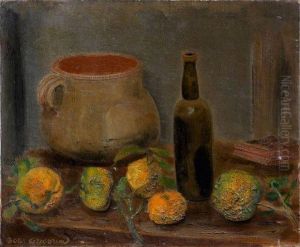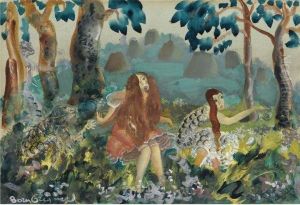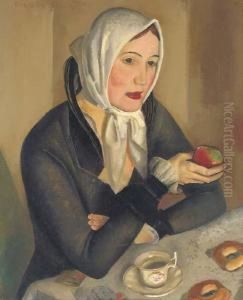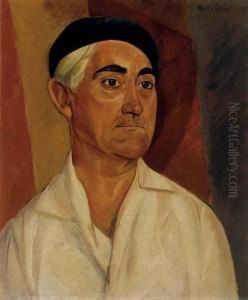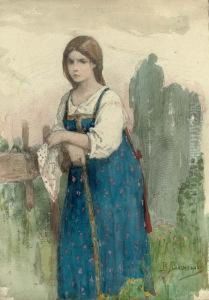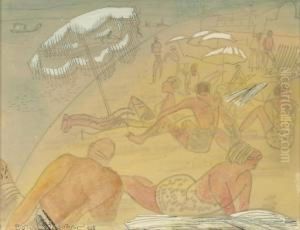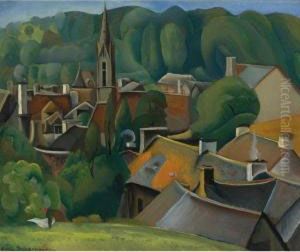Dmitrievich Grigor'Ev Boris Paintings
Boris Dmitrievich Grigor'yev was a Russian artist known for his significant contribution to the Russian art scene of the early 20th century. Born on July 11, 1886, in Rybinsk, Yaroslavl Governorate, Russian Empire, Grigor'yev was an influential figure in the Russian avant-garde movement, although he often stood apart from its major currents, cultivating his own unique style.
Grigor'yev studied at the St. Petersburg Academy of Arts, a prominent institution of fine arts in Russia, from 1903 to 1911. During this period, he was exposed to a variety of artistic influences, which helped shape his eclectic style. He was particularly influenced by Russian folk art and the works of Old Masters. After leaving the academy, Grigor'yev traveled extensively, absorbing artistic techniques and styles from different cultures.
His works often reflected his interest in the lives of ordinary people, and he gained recognition for his series of portraits and scenes that depicted the Russian peasantry. These works showcased Grigor'yev's ability to capture the essence of his subjects, imbuing them with a sense of dignity and emotional depth.
During the Russian Revolution, Grigor'yev's art took on a more somber tone, reflecting the tumultuous events of the time. However, as the political climate in Russia changed and the Soviet regime began to impose strict controls over artistic expression, Grigor'yev found it increasingly difficult to work within the confines of the official art policies.
In the early 1920s, he left Russia and settled in Paris, becoming part of the growing community of Russian émigré artists there. While in France, he continued to paint and also engaged in writing and illustration. Despite the distance from his homeland, Grigor'yev remained deeply connected to Russian themes, and his work continued to be infused with a sense of nostalgia and a search for national identity.
Boris Dmitrievich Grigor'yev died on February 7, 1939, in Cagnes-sur-Mer, France. His artistic legacy is appreciated for its poignant portrayal of the human condition, and his works are held in various museum collections, including the State Russian Museum in St. Petersburg and the Tretyakov Gallery in Moscow.














![Rassiea [text In Russian]](https://www.niceartgallery.com/imgs/1192144/s/dmitrievich-grigorev-boris-rassiea-text-in-russian-b3d9b224.jpg)



